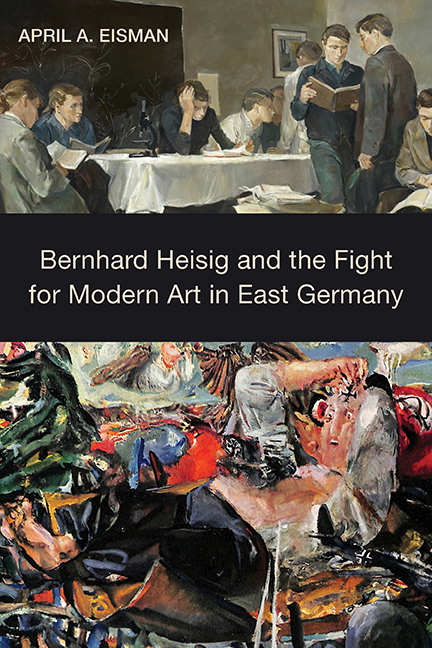Book contents
- Frontmatter
- Contents
- List of Illustrations
- Acknowledgments
- List of Abbreviations
- Introduction: Why Heisig Matters
- 1 From the Nazi Past to the Cold War Present
- 2 Art for an Educated Nation
- 3 Against the Wall: Murals, Modern Art, and Controversy
- 4 The Contentious Emergence of the “Leipzig School”
- 5 Portraying Workers and Revolutionaries
- Conclusion: The Quintessential German Artist
- Notes
- Bibliography
- Index
Conclusion: The Quintessential German Artist
Published online by Cambridge University Press: 14 June 2019
- Frontmatter
- Contents
- List of Illustrations
- Acknowledgments
- List of Abbreviations
- Introduction: Why Heisig Matters
- 1 From the Nazi Past to the Cold War Present
- 2 Art for an Educated Nation
- 3 Against the Wall: Murals, Modern Art, and Controversy
- 4 The Contentious Emergence of the “Leipzig School”
- 5 Portraying Workers and Revolutionaries
- Conclusion: The Quintessential German Artist
- Notes
- Bibliography
- Index
Summary
It will take us longer to tear down the Wall
in our heads than any wrecking company
will need for the Wall we can see.
—Peter Schneider, 1982Between 1964 and 1969, Heisig was at the center of four controversies about art. These centered on his speech at the Fifth Congress, his murals for the Hotel Deutschland, and his Paris Commune and Brigade paintings. In each controversy, he argued—in words or pigment—that artists, not politicians, should be the ones deciding what art in Socialism should be and that there needed to be a greater openness to modern artistic styles and to the breadth of life's experiences. Pushing the boundaries of what was officially acceptable at the time—in both content and style— Heisig ultimately helped to change painting in East Germany from the realistic, heroic, and optimistic socialist realism of the early 1950s to the dialogical, modern art of the 1970s. It is these latter works, by Heisig and others, that came to represent East Germany internationally beginning in the late 1970s.
The shift to a modern artistic style in official East German art was facilitated by the rise of Erich Honecker to power. Shortly after replacing Ulbricht as head of the East German state in 1971, Honecker gave a speech at the Fourth Congress of the SED's Central Committee, reproduced in Neues Deutschland, in which he stated that, “when one starts from a committed Socialist position, there can be … no taboos in art and literature, neither in content nor in style.” In the wake of this speech, the openness to modern art that Heisig and others had fought for throughout the 1960s became official and the debates around art ended, at least with regard to the expressionist tradition and for those committed to Socialism.
This shift in cultural policy marked the beginning of Heisig's rise to national, later international, recognition. In 1972, he received the National Prize of the GDR (Second Class) and became chair of the VBK-L for the second time.
- Type
- Chapter
- Information
- Bernhard Heisig and the Fight for Modern Art in East Germany , pp. 161 - 186Publisher: Boydell & BrewerPrint publication year: 2018

